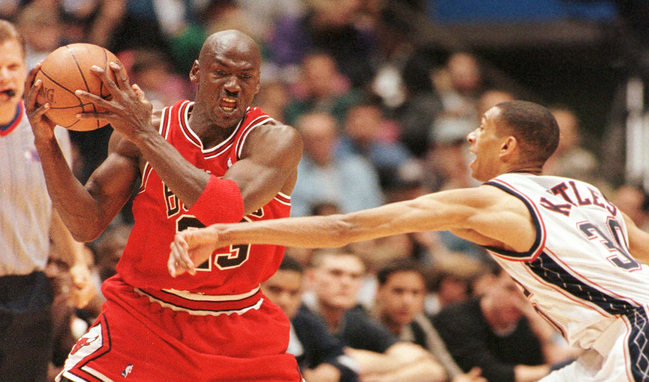Setting and Motivating Goals in Sports: A Necessary Step
In the realm of sports, where competition is fierce and the pursuit of excellence is paramount, goal-setting and motivation .

In the realm of sports, where competition is fierce and the pursuit of excellence is paramount, goal-setting and motivation stand as pillars of success. Athletes, whether they compete at the amateur or professional level, often rely on these two essential components to drive their performance and achieve their desired outcomes. This article delves deep into the intricacies of goal-setting and motivation in sports, exploring their significance, the psychology behind them, and the methods by which athletes harness their power to reach the pinnacle of their potential.
The Significance of Goal-Setting in Sports
Goal-setting is the process of identifying specific objectives that an athlete aims to accomplish within a defined timeframe. These objectives can range from improving a personal best in a particular event to winning a championship. The significance of goal-setting in sports cannot be overstated, and here's why:
Clarity and Focus: Goals provide athletes with a clear sense of direction. They help athletes concentrate their efforts and resources on specific tasks and outcomes. When athletes know what they are working towards, they are less likely to get distracted or lose motivation.
Motivation: Setting goals creates motivation. Athletes are more likely to stay committed to their training regimens when they have a compelling reason to do so. Goals serve as a constant reminder of what they are striving for, which keeps their motivation levels high.
Measurable Progress: Goals can be quantified and measured. Athletes can track their progress toward achieving their goals, which gives them a sense of accomplishment and satisfaction as they make strides toward their desired outcomes.
Accountability: Publicly stating one's goals or sharing them with a coach or teammates can create a sense of accountability. Athletes feel a responsibility to themselves and others to work diligently towards their goals.
Resilience: Goals can help athletes bounce back from setbacks and failures. When athletes face challenges or experience defeats, their goals act as a source of resilience, pushing them to persevere and learn from their mistakes.
Self-Belief: Achieving one's goals can boost an athlete's self-confidence and self-belief. Success breeds confidence, and confident athletes tend to perform better under pressure.
The Psychology of Goal-Setting in Sports
Understanding the psychology behind goal-setting in sports can provide valuable insights into why it is such a potent tool for athletes. Several psychological principles come into play:
Motivation Theory: Goal-setting aligns with motivation theory, specifically the concept of intrinsic motivation. When athletes set goals that are meaningful to them, they are more likely to be internally motivated to pursue them. Intrinsic motivation is a powerful force that drives athletes to work harder and persist in the face of challenges.
Self-Efficacy: Goal-setting can enhance an athlete's self-efficacy, which is the belief in their ability to achieve specific tasks or goals. Setting and achieving goals can lead to an increased sense of self-efficacy, which, in turn, bolsters an athlete's performance.
Cognitive Functioning: Goals activate cognitive processes that help athletes plan, strategize, and problem-solve. The act of setting a goal stimulates the brain to think critically and creatively, leading to improved decision-making and performance.
Positive Reinforcement: Achieving goals provides athletes with a sense of accomplishment and positive reinforcement. This positive feedback loop encourages athletes to set new, more challenging goals, further driving their improvement and success.
Goal Commitment: Publicly declaring goals or sharing them with others increases an athlete's commitment to achieving them. The fear of letting themselves or others down can be a powerful motivator.
Incorporating Motivation into Sports
While goal-setting serves as a foundation for motivation, it is essential to explore the concept of motivation itself in greater detail. Motivation is the internal or external force that initiates, directs, and sustains an athlete's behavior and effort toward achieving specific goals. In sports, motivation is often categorized into two main types: intrinsic and extrinsic.
Intrinsic Motivation: Intrinsic motivation comes from within the athlete. It is driven by personal satisfaction, enjoyment, and a deep passion for the sport itself. Athletes with high levels of intrinsic motivation often find joy in the process of training and competing, regardless of external rewards.
Extrinsic Motivation: Extrinsic motivation, on the other hand, is derived from external factors such as rewards, recognition, or social approval. While extrinsic motivation can be effective in the short term, it is generally considered less sustainable than intrinsic motivation. Athletes primarily motivated by external rewards may struggle to maintain their commitment when these rewards are no longer available.
Effective motivation in sports often involves a balance of both intrinsic and extrinsic elements. Here are some strategies for incorporating motivation into sports:
Set Intrinsic Goals: Encourage athletes to set goals that are personally meaningful and aligned with their values and passions. When athletes are intrinsically motivated, they are more likely to maintain their commitment over the long haul.
Provide Extrinsic Rewards Sparingly: While extrinsic rewards can be useful, they should be used judiciously. Over-reliance on extrinsic rewards can undermine intrinsic motivation. Instead, use them as occasional incentives to complement intrinsic motivation.
Foster a Supportive Environment: Create a positive and supportive team or training environment. Athletes who feel a sense of belonging and camaraderie are more likely to stay motivated. Coaches and teammates can play a vital role in nurturing motivation.
Celebrate Achievements: Recognize and celebrate athletes' achievements, whether big or small. Positive reinforcement reinforces motivation and can boost an athlete's self-esteem.
Set Challenging Goals: Goals that are challenging but attainable can boost motivation. Athletes thrive when they are stretched beyond their comfort zones but still believe they can succeed with effort.
Provide Constructive Feedback: Feedback should focus on improvement and learning rather than criticism. Constructive feedback helps athletes see how they can progress and reach their goals.
The Intersection of Goal-Setting and Motivation
The relationship between goal-setting and motivation in sports is dynamic and symbiotic. Goal-setting provides the framework and direction, while motivation fuels the athlete's determination and effort to pursue those goals. Here's how these two elements intersect and reinforce each other:
Goal-Setting Fuels Motivation: The act of setting a goal can be a powerful motivator in itself. When an athlete establishes a clear, challenging goal, it ignites their intrinsic motivation, as they become personally invested in achieving it. This initial burst of motivation provides the energy and drive needed to take the first steps toward the goal.
Motivation Sustains Goal Pursuit: While setting a goal can initiate motivation, it's the athlete's sustained motivation that keeps them committed to the long journey ahead. Motivation serves as the engine that propels the athlete through the inevitable setbacks, challenges, and plateaus that come with sports training and competition.
Feedback Loop: As an athlete works toward their goals, they receive feedback, both in the form of progress and setbacks. This feedback loop further influences their motivation. Successes reinforce motivation, while setbacks can either demotivate or serve as opportunities for growth, depending on the athlete's perspective.
Adjusting Goals: Goals are not static; they can be adjusted as an athlete progresses and gains new insights. Motivation plays a critical role in an athlete's willingness to adapt their goals to align with their evolving capabilities and aspirations.
Maintaining Consistency: Consistency is key in sports. Consistent effort over time is often more critical than short bursts of intensity. Motivation helps athletes maintain their consistency, even when the initial excitement of setting a goal wanes.
Case Studies: Goal-Setting and Motivation in High-Performance Athletes
To illustrate the practical applications of goal-setting and motivation in sports, let's explore two case studies of high-performance athletes who have harnessed these principles to achieve remarkable success.
Case Study 1: Serena Williams (Tennis)
Serena Williams, one of the greatest tennis players of all time, is known for her unmatched work ethic and dedication to her sport. Throughout her career, she has set and achieved numerous goals, including winning Grand Slam titles and becoming the world's top-ranked player. Serena's journey demonstrates the power of goal-setting and motivation:
Clear Goals: Serena sets clear, specific goals for each season, often centered around winning major tournaments. These goals provide her with a sense of purpose and motivation.
Intrinsic Motivation: Serena's love for tennis is evident in her intrinsic motivation. She genuinely enjoys the process of training and competing, which fuels her motivation year after year.
Resilience: Serena has faced injuries and setbacks but remains motivated to overcome challenges and return to peak performance. Her ability to bounce back is a testament to her goal-oriented mindset.
Goal Adjustment: As Serena has progressed in her career and become a mother, her goals have evolved. She adjusted her priorities and goals while maintaining her motivation to compete at the highest level.
Case Study 2: Usain Bolt (Track and Field)
Usain Bolt, the Jamaican sprinter often referred to as the fastest man in the world, is another example of an athlete who harnessed goal-setting and motivation to achieve extraordinary success:
Setting World Records: Bolt's primary goals were to break world records in the 100m and 200m sprints. These ambitious goals provided him with a laser-like focus and motivation to continually push his limits.
Extrinsic Motivation: While Bolt had intrinsic motivation for sprinting, the prospect of winning Olympic gold medals and breaking records provided a significant extrinsic motivator. These external rewards complemented his internal drive.
Consistency: Bolt maintained a consistent training regimen year-round, ensuring that he was always in peak physical condition. His unwavering dedication to his goals was a key factor in his success.
Mindset: Bolt's confidence and positive mindset were integral to his achievements. He believed in his ability to achieve his goals and maintained a relaxed, joyful attitude even under immense pressure.
Goal-setting and motivation are indispensable tools in the arsenal of athletes striving for excellence in sports. They work in tandem, providing athletes with direction, purpose, and the drive to push their boundaries. Goal-setting offers clarity, focus, and a roadmap to success, while motivation serves as the fuel that keeps athletes moving forward, even in the face of adversity.
For athletes, coaches, and sports enthusiasts alike, understanding the psychology behind goal-setting and motivation can unlock the potential for greatness. It's not merely about setting goals but about harnessing the power of those goals to ignite a fire within, fueling a relentless pursuit of excellence. In sports, as in life, the synergy of goal-setting and motivation is a potent force that can propel individuals to achieve feats they once thought impossible.
What's Your Reaction?

















